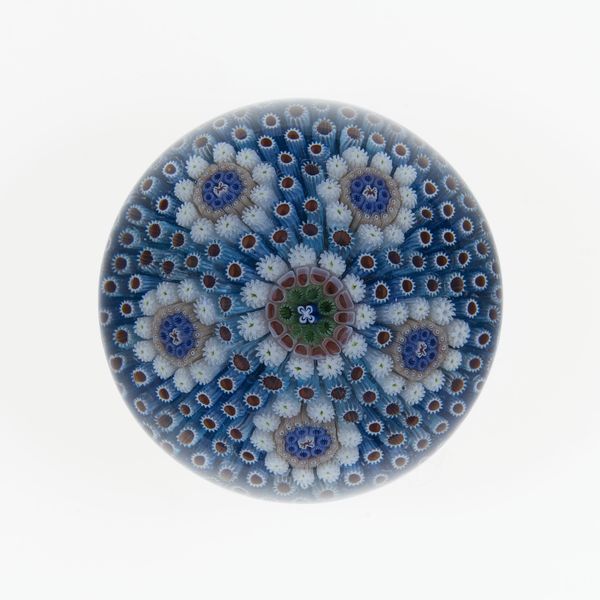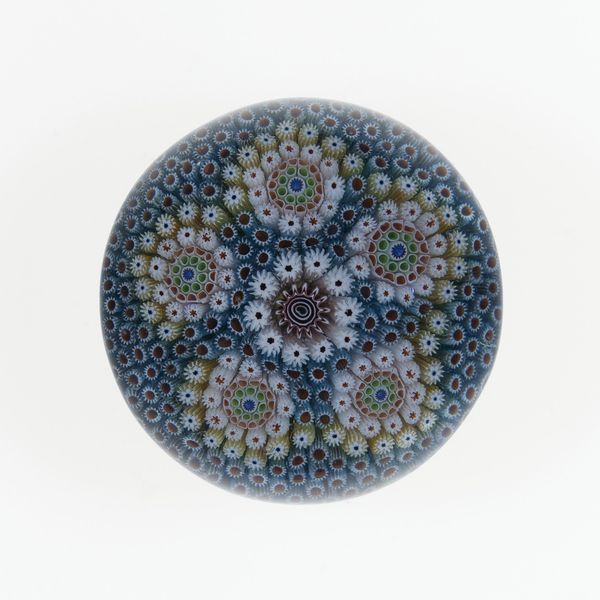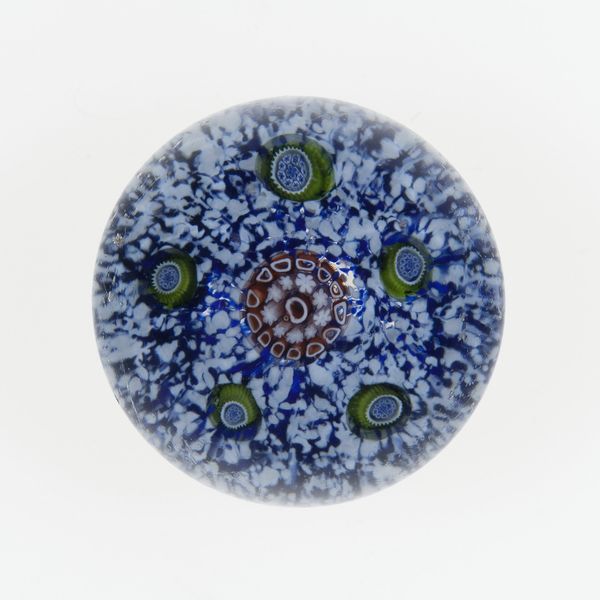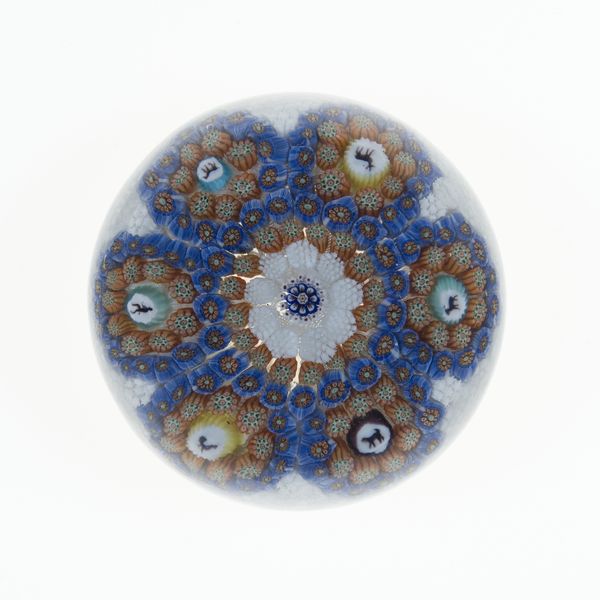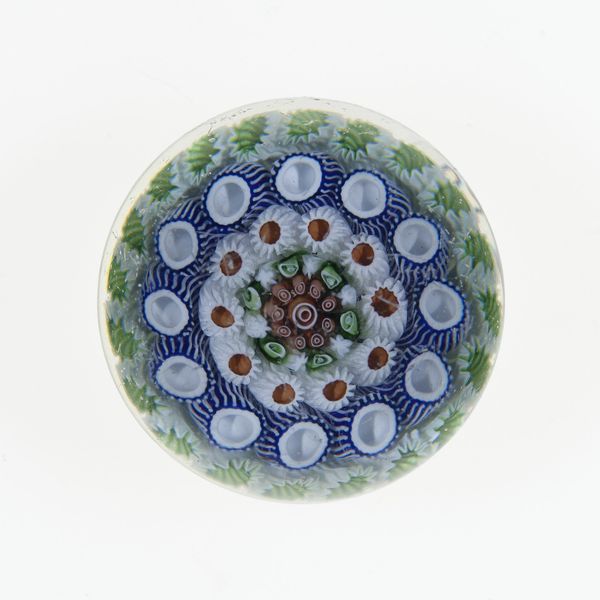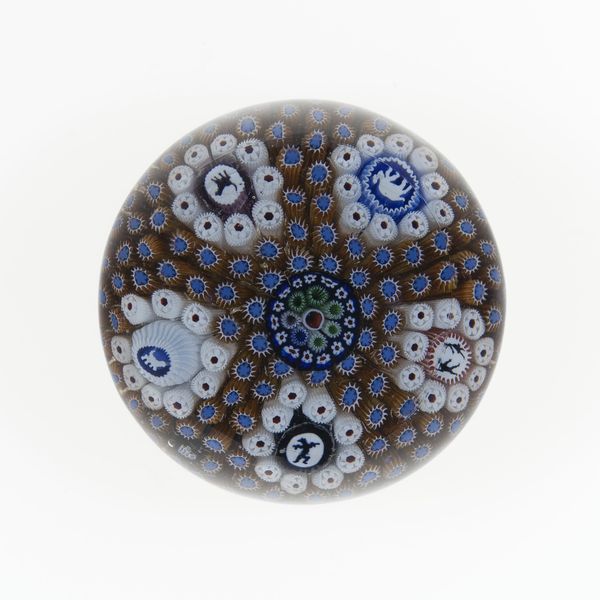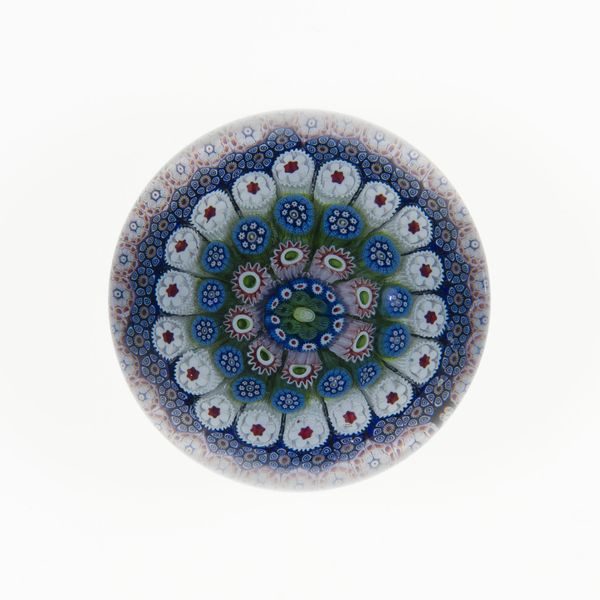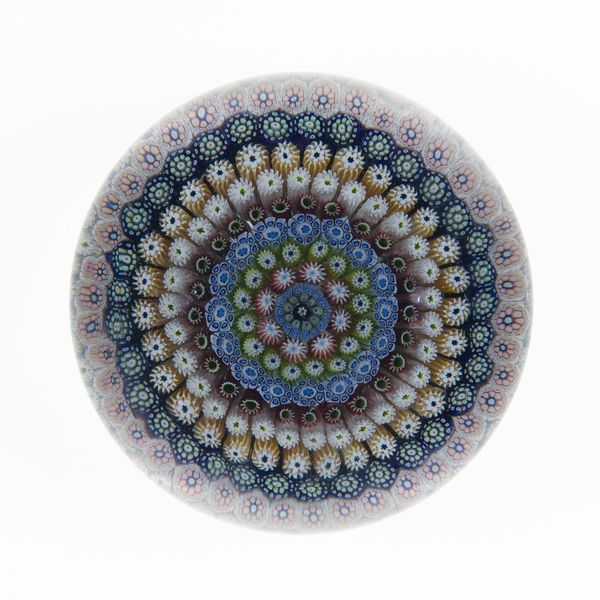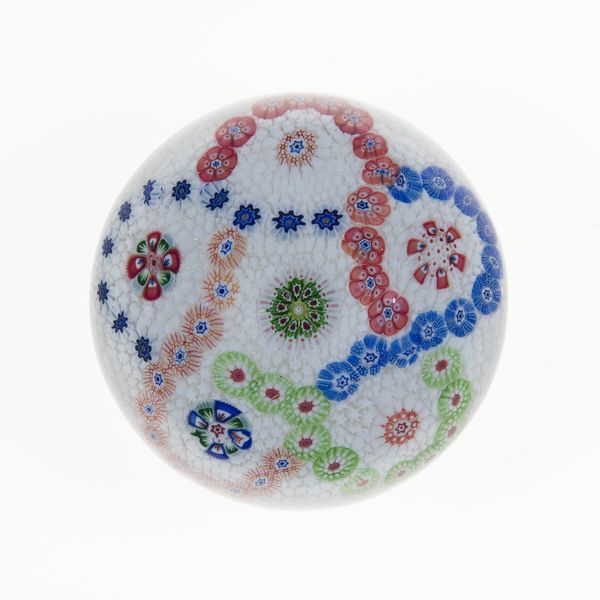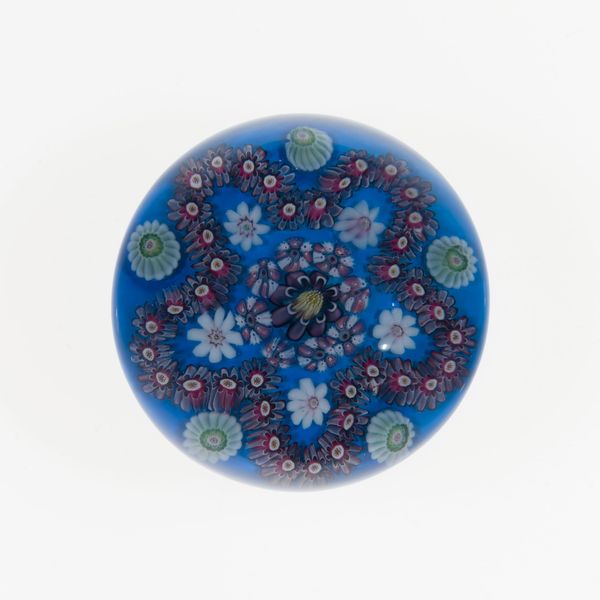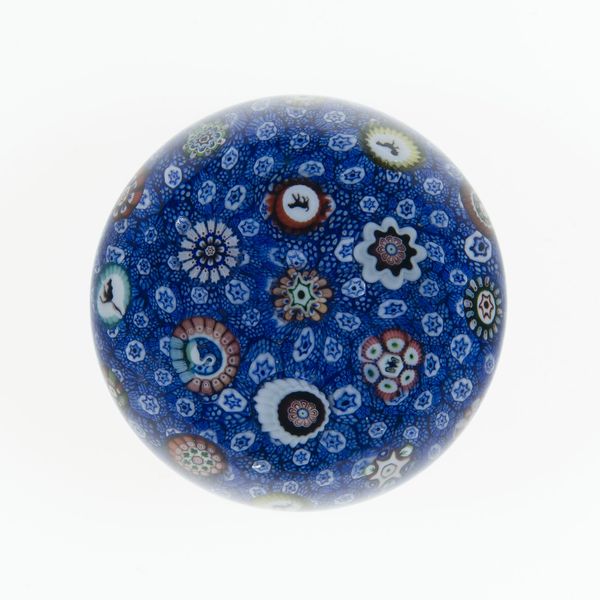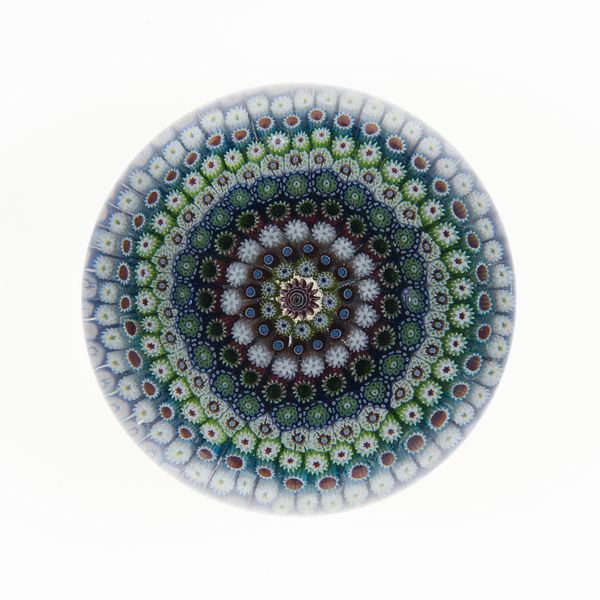
glass
#
glass
#
decorative-art
Dimensions: Diam. 7 cm (2 3/4 in.)
Copyright: Public Domain
Editor: This is the "Paperweight", crafted in 1848 by the Compagnie de Saint Louis. It’s glass. The density of pattern is kind of hypnotic. What draws your eye when you look at this piece? Curator: The construction is fascinating. Notice how the individual florets, the "millefiori," are not randomly scattered. There's an underlying geometric order. Observe the radial symmetry, the way clusters of these floral units organize into larger constellations. The individual elements work in chorus for visual complexity, yet adhere to fundamental order. Editor: I hadn't thought of the radial symmetry. Are the individual florets identical? Curator: That's another key question! No. The glass masters use subtle variations in color, size, and the arrangement of the elements. Semiotically, you can see it as each flower contributes uniquely while referencing common attributes. So while there is conformity to the overall structure, we must acknowledge the individual mark that offers a playful variation. Editor: That interplay feels very Art Nouveau, trying to create both the organic and geometric. What does this repetitive order evoke? Curator: Repetition can signal many things, but let’s use formalism to decode it. Through the technique, it reflects industrial advancements in glass-making of that era as pattern-and-decoration evolved. What once might have taken meticulous hand labor now involved new capabilities. Notice the interplay between the technical capability and artistry, with industrial elements used as a framework to support an infinite set of possibilities. What do you see now? Editor: I'm beginning to understand how even in something that seems so small and contained, we can see echoes of technique, history, and composition. Curator: Exactly! The artist challenges us to see this tiny orb, but its components exist in larger contexts.
Comments
No comments
Be the first to comment and join the conversation on the ultimate creative platform.
